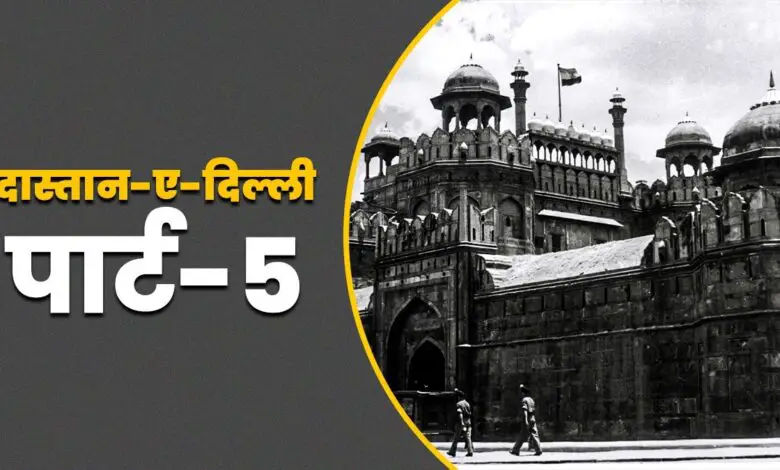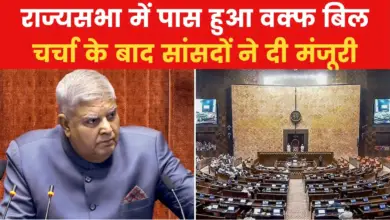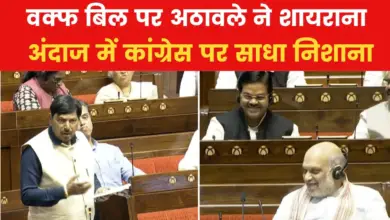…When American soldiers came to protect Delhi, trenches and bunkers were dug at India Gate! – Delhi Assembly Election 2025 US army in Delhi for security Delhi history ntc

The country’s capital Delhi is preparing for assembly elections. Political parties have been making many promises to make Delhi world class and big claims and promises are being made in this election too, but do you know that once Delhi had also become the battle arena of the big powers of the world. Know that period when soldiers came from America for the security of Delhi, bunkers and trenches were dug at India Gate. Let us know who was the enemy of Delhi, whose attack was Saddi Delhi living in fear of?
Although our country India keeps distance from international wars and other global issues, after independence, India saved itself from the cold war of America and Russia by joining the Non-Aligned Movement during the era of Pandit Nehru. Then during the tenure of Indira Gandhi, India came closer to Soviet Russia, and then after the Soviet disintegration, it grew closer to America from the 1990s. Independent India itself has faced wars with China and Pakistan, but before that there was a period when the heat of world war had fallen on India, especially the capital Delhi. At any time, Delhi could become a battlefield for the countries involved in the World War and in this environment, even American soldiers were deployed on the streets of Delhi. After all, what was that period like and who was the enemy who planned to destroy Delhi?
How did India fall into the trap of the Second World War that lasted from 1939 to 1945? This can be seen by carefully observing the events of that period. The country was under British rule, the freedom movement was at its peak but the world was busy in the Second World War. Country after country and city after city were being destroyed, especially the cities of Europe were wreaking havoc. Hitler’s armies were destroying countries like Poland and the Netherlands and wreaking havoc on the borders of Britain and France.
Here in Asia, Japan had joined the war with Hitler’s forces and was taking on the British forces. India, which was under British rule, was also their target. However, many people were welcoming Subhash Chandra Bose and Azad Hind Fauj standing with Japan. In protest against the British rule, some people even started calling the Japanese an incarnation of Lord Shiva. It was an amazing view of Delhi then.
What was going on in Delhi in the early 1940s when the Second World War was going on? Rajendra Lal Handa has described that period in detail in his book. He writes- ‘There was no movement in Delhi for the first two years of the war. Neither the public nor the government officials were worried about the war. In fact, the first two years were beneficial. All the useless people got jobs, contractors got rich and salaries of many government employees got increased this year. However, the movement for independence from British rule was gaining momentum. But as soon as 1941 ended, the tables turned. Japan jumped into the war and India also got a windfall. The interest of the people of Delhi in the news of the war increased. Perhaps for the first time he saw the horrors of war approaching India. Now talks of war started everywhere.
Prices of essential commodities started increasing, goods started disappearing from the market. Sugar increased from four annas to seven annas. Wheat disappeared from the market, prices of flour and coal started skyrocketing. After the implementation of the rationing system, most of the people became busy in arranging for flour and pulses. The number of government offices and officers and employees suddenly started increasing in New Delhi and government interference on bungalows and houses increased. All the big empty chambers and palaces of the kings were acquired by the government. In some, offices and in some office people had settled. Trenches were being dug on dozens of roads in India Gate and important areas of New Delhi and preparations were being made to protect against air attacks. One or two attacks had already taken place on Calcutta. The British government was making preparations to keep Delhi safe. American soldiers were also deployed on the streets of Delhi to help the British.
Bizarre type of shelters were built at various places in Delhi which were built in a hurry. The people of Delhi were also made to practice defense against attack by blowing horns and creating complete darkness. However, there was not much movement among the common people. Practices continued. On the other hand, the Japanese entered Manipur and predictions began about the enemy’s capture of Calcutta. But the people of Delhi were not perturbed. Same crowd at Jama Masjid in the evening, same excitement in Chandni Chowk and same hustle and bustle remained in Connaught Place. The people of Delhi have been witnessing the ups and downs of governance, collapse of sultanates, external invasions… all these things for thousands of years.
The spring fair of 1942 was the last fair in the old fort. After a few months, Italian prisoners of war were brought here. For three years this fort gave shelter to these white warriors. After being freed from the prisoners of war, it took many years for the old fort to return to its original condition.
In his book, Handa also mentions the interesting story of his accident and friendship with an American soldier. they write- ,The incident is of November 1943. One day I had to reach Connaught Palace at exactly five o’clock for some important work. It was quarter to five in the office. Got up the bicycle and ran away. Was going very fast, from Regal’s side an American soldier holding a bicycle in his hand was slowly going towards Scindia House. I collided with his bicycle with force. The wheel of his bicycle got bent like a roti gets bent. The poor American got pushed and fell to one side. I immediately picked her up and apologized for hurting her. The American soldier did not say anything, he just dusted himself. After I repeatedly dusted the cloth, he pointed towards his badly damaged bicycle and said – But what will happen to it? I said- I am sorry about this accident, don’t worry about the bicycle at all. I will get it repaired. I just want to know if you are hurt?
I loaded his bicycle on the horse carriage and set out to get it repaired and the American soldier followed me on my bicycle, chewing peanuts. I had completely forgotten my work in Connaught Place. As soon as I reached Odeon, I stopped the cart and called a man from the adjacent bicycle shop. Seeing the bicycle, he said that it would be fine but would be available only tomorrow. I explained to the shopkeeper and also to the American that now your bicycle will be repaired. I handed over the repair price of Rs 11 to the American. Now he was satisfied and gave me my bicycle and said that now you can go.
After an hour of silence he laughed loudly and said- I live in Wangers flat on Parliament Street. My room number is 15 and my name is Henry J. Humphrey. If you have some time, let’s have a cup of coffee. I accepted the invitation, happy that a tragic incident had a happy ending. He was limping a bit, after reaching the room he treated himself with cotton and medicine. I felt very uncomfortable but he said that the injury was minor, earlier I was worried about the bicycle. After eating a handful of peanuts each, we drank hot coffee. We talked about many things. He was quite impressed by my gentle behaviour. At eight o’clock I asked permission to leave. Humphrey came to the road to see me off. Humphrey promised to come to my house and I left.
The war was intensifying in Europe and the excitement regarding it was increasing in Delhi.
Handa further writes- ‘In that month of November 1943, the excitement in Delhi had intensified. In those days, more than 10 thousand Americans were in Delhi. Wherever you looked in the evening, these same people were seen. They had no other work except roaming around. Every day 30-40 Americans used to stand in front of Regal, Plaza and Odeon cinema houses. Watching movies and chewing peanuts were his main activities in his free time.
The Americans were at the center of the extraordinary glow that had taken place in Delhi during the war. The prices of things in those days were like a shifting shadow; shopkeepers would ask for whatever price they wanted. We were used to making deals but initially the Americans were not. Humphrey told me that when he came to Delhi in the month of March, he paid eight annas per day for boot polish for the whole month and several times bought betel leaves for four annas. Sometimes the horse cart drivers also extorted a lot of money from them. But Americans are very tactful. Soon he learned to bargain for the right price.
Humphrey traveled a lot with me to Delhi, through him I also met many other Americans. Americans are very strict in their calculations. One day we both walked the whole day, ate peanuts, bananas and oranges. As soon as we returned in the evening, Humphrey immediately calculated with paper and pen and said – nine rupees twelve annas. And yours becomes four rupees and fourteen annas. Whatever you give me. I immediately paid and shook hands and returned home. Americans are strict in calculations but are also good friends. After the war ended in 1945, Humphrey went home to Boston. Later three-four letters also came from him. I got that expensive addiction of photography and my children got addicted to sucking chewing gum.




